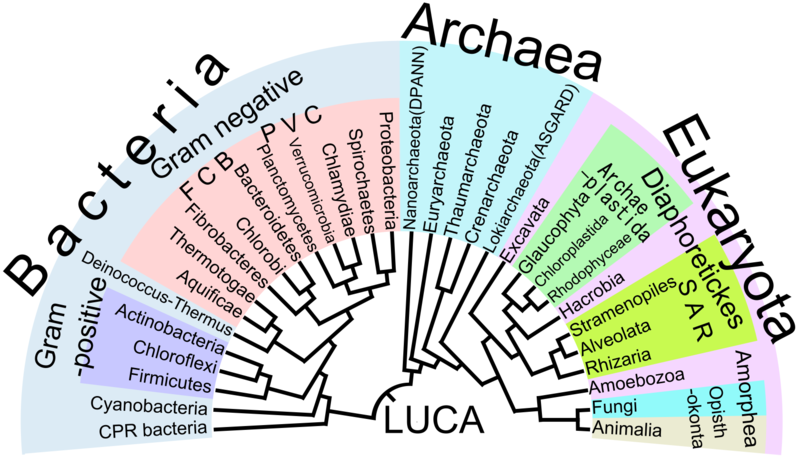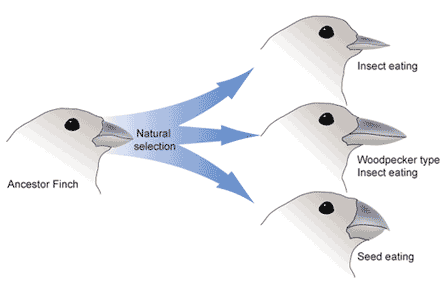Listen to Episode 56 on PodBean, Spotify, YouTube, or anywhere they have podcasts!
In this episode we take a look at the origins of a theory that we discuss in almost every episode of the podcast: the theory of evolution. Instead of describing different examples of how evolution works we thought it better to describe the long and complicated history of how this idea came to exist as it does today. So join us as we analyze the Evolution of Evolutionary Theory.
In the news
Incredibly small remains of Triassic frogs are the oldest in North America.
A nest thought to be from colonial birds is revealed to have a variety of species.
Researchers observe single-celled algae develop into multi-cellular forms.
A tusked dugong found in the Panama Canal is a new species.
Evolution
So what is evolution? It’s at the core of modern biology and we mention it in almost every discussion we have. The short definition is that evolution is “descent with modification.” Evolutionary Theory states that all life on Earth shares a common ancestor and has diversified due to the modification of heritable traits within populations.
Today, evolution provides a way for us to understand how organisms have come to be as they are now, and how they’re related. This also forms the basis of how we classify organisms.
History
The concept of evolution is not a new one. There have been many different attempts over the millennia to explain and organize the variety of organisms in the natural world. Below are some notable moments in history that led to our modern views of evolution.
Aristole (384–322 BC) and Al-Jahiz (776–868 AD) are two of the earliest to provide detailed looks into the organization of life and how it functions. Aristole’s famous Great Chain of Being categorized organisms by least to most advanced, and remained our main way of thinking until the end of the middle ages.
It’s not until the 1700’s that we get a new way to organize life. Carolus Linnaeus was a Swedish zoologist and botanist who collected thousands of plant and animal specimens, and in 1735 he proposed a new system to organize life known as binomial nomenclature. We still use this and a version of his hierarchy of life (domain, kingdom, phylum, class, order, family, genus, species) to this day.

During the latter half of the 1700’s a number of scientists and thinkers began to cautiously suggest that life may have changed though time and even that the earth may be older than 6000 years, including Comte de Buffon and Erasmus Darwin (Charles’ grandfather).
By the beginning of the 1800’s we have our first proposed model to explain how life changed and evolved. Jean-Baptiste Lamarck, a French biologist, suggested that animals could change through time via the inheritance of acquired characteristics and that they would increase in complexity as they evolved. Though this hypothesis was ultimately shown to be incorrect, it did help spark a different theory of evolution.

Many disliked Lamarck’s hypothesis, first among them being Georges Cuvier, a zoologist and proponent of catastrophism, the idea that our planet has remained mostly the same through time except for dramatic catastrophes. This idea was the opposite of uniformitarianism, which put forth that the same gradual processes we see today create great change over long time periods, an idea that was championed by Charles Lyell.
In 1859 the famous Charles Darwin published his book, On the Origin of Species, which proposed evolution via natural selection as well as the concept of common descent (hey, that’s us!). Darwin’s work was inspired by the works of Lamarck, Cuvier, Lyell, Wallace, and others.
Natural selection is built on the observations that organisms have variations in their traits and the more successful survivors pass their traits onto their young while the traits of those that don’t survive are lost. This model fits the evidence almost perfectly; the only thing it couldn’t answer was how these traits are passed on, though Darwin did make a few attempts.

Coincidentally, at the same time Darwin was conceiving of natural selection, an Augustinian monk named Gregor Mendel was discovering the mechanics of trait inheritance. Through the study of pea plant characteristics Mendel realized traits were not blended but remained separate in the offspring. This led him to suggest three concepts of inheritance now known as Mendel’s Laws. Though his work was groundbreaking, his use of mathematics made it difficult for botanist to understand it and his findings went unacknowledged. That is, until 1900 when it was rediscovered.
Modern Synthesis
Finally in the mid-1900’s, both Darwinian Evolution and Mendelian Inheritance were combined into a single, unified theory referred to as the Modern Synthesis. This is, more or less, the version of the theory used to this day.
Evolution is now defined as the changes in allele (variable trait) frequencies within populations. This emphasizes the new focus on genetics within evolution.
It has also been acknowledged that natural selection is not the only driving factor of evolution, there are now four main pressure that cause evolution: natural selection, genetic drift, gene flow, and mutation.
Of course there are still new insights to be made and new aspects of genetics and evolution being discovered so the details of the theory are constantly being refined. For instance, the discovery of epigenetics has revealed features of genetic inheritance that almost mimic Lamarck’s hypothesis.
As usual, this is only a portion of the information available. If you’d like to read more take a look at these links:
History of Evolution from the Philosophical Point of View
Welcome to Evolution 101!: A guide through evolutionary theory by Berkeley College
Spontaneous Generation: The old way we used to think life naturally originated.
A couple of other cool YouTube videos on the topic: Epigenetics and Common Misconceptions About Evolution
—
If you enjoyed this topic and want more like it, check out these related episodes:
- Episode 28 – Charles Darwin
- Episode 54 – Alfred Russell Wallace
- Episode 10 – The Tree of Life
- Episode 20 – The Scientific Method
We also invite you to follow us on Twitter, Facebook, or Instagram, buy merch at our Zazzle store, join our Discord server, or consider supporting us with a one-time PayPal donation or on Patreon to get bonus recordings and other goodies!
Please feel free to contact us with comments, questions, or topic suggestions, and to rate and review us on iTunes!
A minor correction: if Cuvier was a proponent of catastrophism, he was a supporter of the idea.
LikeLike